How shelter embed programs are saving pets’ lives

Behind every homeless pet is a shelter employee working tirelessly — day in and day out — to save lives. These often-unsung heroes comfort trembling pets who are nervous and new to the shelter. They may drive a van full of dogs to a rescue group at dawn, work against the clock to find a foster home for a litter of kittens, and make countless heartbreaking life-or-death decisions for animals. And yet, these extraordinary efforts are all in a day’s work.
Overwhelmingly, shelter workers want to create positive change in their under-resourced and understaffed shelters. But to do so, they need help. It’s often hardest to see the solutions when you’re steeped in the challenges. A fresh perspective can make for a monumental shift. That’s why, as Best Friends works to achieve no-kill in every shelter and every community nationwide, we are dedicated to working hand-in-hand with shelter workers — to provide that fresh perspective. We know the task at hand is a big one: Around 347,000 dogs and cats lost their lives in animal shelters last year. But we also know that, working together, we can achieve so much.
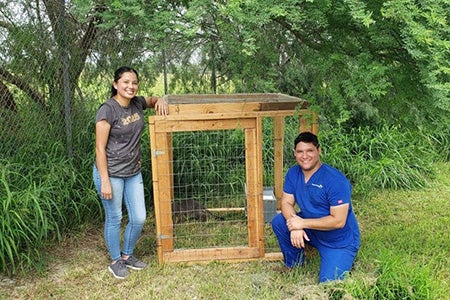 Most shelter employees are attracted to animal welfare because they have a passion for animals. As Terri Hinojosa, currently the lifesaving shelter supervisor for Humane Society of Harlingen in Texas, says: “I love animals, especially cats. I’ve worked at no-kill shelters before, but when I started at Harlingen, I became a euthanasia technician.” Put bluntly, she was put in a position of having to oversee the termination of innocent lives. To say that takes a toll on someone is a huge understatement.
Most shelter employees are attracted to animal welfare because they have a passion for animals. As Terri Hinojosa, currently the lifesaving shelter supervisor for Humane Society of Harlingen in Texas, says: “I love animals, especially cats. I’ve worked at no-kill shelters before, but when I started at Harlingen, I became a euthanasia technician.” Put bluntly, she was put in a position of having to oversee the termination of innocent lives. To say that takes a toll on someone is a huge understatement.
At other shelters where she worked, Terri enjoyed getting to know the animals; it felt rewarding, a perk of the role she had. But at Humane Society of Harlingen, her job was to end the lives of cat after cat (and dog after dog) because there were so few programs in place to save them. Terri says, “I wouldn’t even get to know the animals because they’d be gone the next day.” A heartbreaking shift, to be sure.
Help was on the way, though. Best Friends stepped in to lend support, and through the Maddie’s® Shelter Embed Project, we placed an experienced Best Friends employee, Terran Tull, in a temporary but long-term leadership role at Humane Society of Harlingen. Terran guided Terri and the rest of the shelter’s staff as they made changes that would save more lives (not to mention, lift staff spirits). Terri’s colleague, animal care supervisor Jason Gonzales, says: “Humane Society of Harlingen did a complete 180 when Terran arrived. We realized there were a lot of unnecessary barriers in the way of lifesaving. When we removed them, our save rate skyrocketed.”
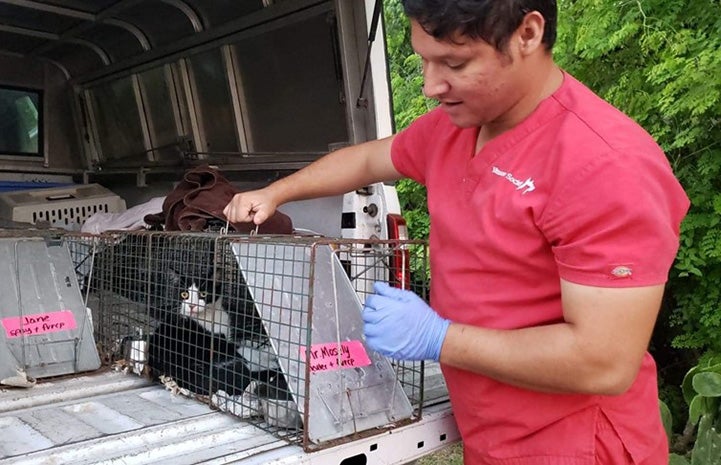
[Five sweet updates from Best Friends Network partners]
Best Friends first piloted our shelter embed concept in 2017 at Harris County Pets (known then as Harris County Animal Shelter) in Houston, Texas. At the time, only 72% of dogs and cats were leaving the shelter alive. The staff needed help with intake flow, adoptions and community cats. Those needs were greater than what a single assessment and list of recommendations could fix. Because it would take time and hands-on assistance to get new processes to stick, a Best Friends expert in animal care and lifesaving programs relocated to Houston and began working full-time at the shelter. And that, in a nutshell, is the simple genius of the embed concept.
Over 11 months, shelter staff were educated about ways and approaches that would create paths to saving lives, so they wouldn’t have to kill animals to make room for new ones coming in. This kind of support motivated them to keep up their efforts, and to ultimately achieve a 95% save rate for dogs and cats in 2020.
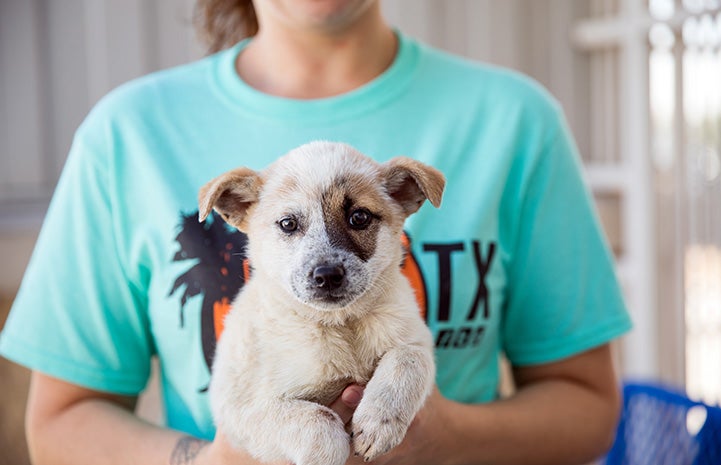
Helping more shelters in need
With such impressive results in Harris County, Best Friends headed south to Palm Valley Animal Society (PVAS), a high-intake shelter in Edinburg, Texas. The shelter’s remote location in the Rio Grande Valley made it difficult to attract leaders with the right experience. When Best Friends’ Mike Bricker was embedded at PVAS in 2018, the shelter was only saving about half of the 30,000 dogs and cats who entered its doors that year. Despite the back-breaking efforts of shelter staff, a lot of lives were being lost.
Mike jumped right in, immediately rolling up his sleeves to introduce operational and programmatic changes that drastically reduced the number of dogs and cats being killed in the shelter. It was a turning point for the shelter embed program: Not only were challenges being overcome in one of the nation’s largest shelters, but Maddie’s Fund came on board as a partner to help sustain and grow the effort. Through the Maddie’s® Shelter Embed Project, Best Friends and Maddie’s Fund were able to remain committed to helping PVAS and additional shelters in need.
Lifesaving progress was happening, but PVAS was still operating on a shoestring budget and didn’t have the best reputation in the community. Working on those two aspects was part of the collaboration between Best Friends and the shelter. When a Best Friends employee is embedded in a shelter, the staff get hands-on support from that no-kill expert as well as assistance from dozens of Best Friends experts armed with lifesaving solutions.
For PVAS, that support meant mentorships in fundraising, public relations and volunteer engagement; higher learning and training opportunities for shelter leadership; and the formation of a 2025 Action Team, who hit the streets to rally the community around helping homeless pets. This ecosystem of support helped make PVAS a no-kill shelter by 2020. The progress was so remarkable that it caught the eye of recognized leaders in animal welfare, allowing PVAS to recruit a new executive director and operations director.

The possibility of transformation
In Harlingen, Terri and Jason learned that animal sheltering doesn’t happen in a vacuum. Dogs and cats are an important part of our lives and communities — and caring for pets and keeping them safe is our collective responsibility. “Best Friends showed by example that the only way to change things is to get the community involved,” Terri explains.
Once the shelter started asking for help, the Harlingen community stepped up to foster and adopt homeless pets, and even to spread holiday cheer. On Christmas Day in 2019, dozens of community members popped by to spoil the animals (and shelter workers, of course) with cookies, enrichment toys and other gifts. In addition to bringing joy to the animals, this heartwarming demonstration of community-supported sheltering boosted staff morale.
[Where animal welfare and social services meet]
While Terran was embedded at Humane Society of Harlingen, another Best Friends staffer, Jessica Gutmann, was helping to turn things around at Santa Rosa County Animal Services (SRCAS) in Florida. Like the other shelters, SRCAS was an under-resourced high-intake facility when Jessica arrived. As the county’s public safety director, Brad Baker, says, “We didn’t want any more Band-Aids. We wanted to make lasting, sustainable change.”
Jessica helped to grow SRCAS’ foster program, equip a medical suite to get pets spayed or neutered and into homes more quickly, and launch a return-to-field program (in which community cats are spayed or neutered, vaccinated and then returned to their outdoor homes). “It can be hard for shelter employees to make changes on their own,” she says. “The shelter embed program provides guidance and support that helps shelters realize their potential and achieve their lifesaving goals.”
When it was time for Jessica to leave, shelter staff wrote her a touching letter. “Not only have our attitudes about the shelter changed, but so have our values and beliefs,” it read in part. “You helped us believe this transformation was possible — and walked us through each step of the way.”
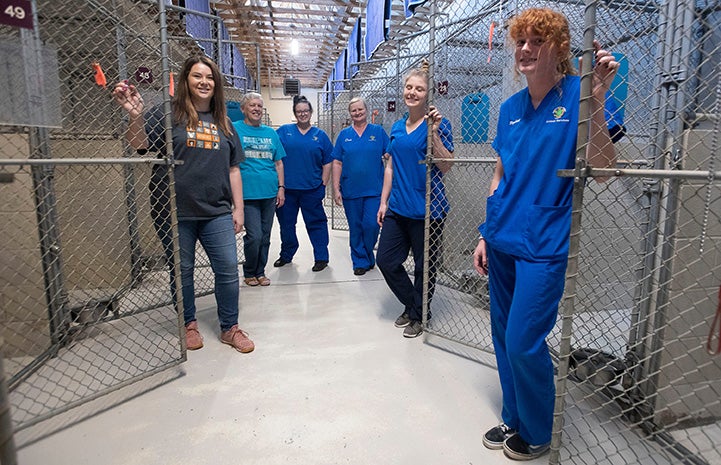
A data-driven approach
Walking shelter staff through challenges and solutions is exactly what the Maddie’s® Shelter Embed Project is designed to do. At Best Friends, we have talented and creative no-kill leaders — people like Terran — who are not only lifesaving experts but want to make a difference for shelter workers and homeless pets. “I adored my job in Dogtown at Best Friends Animal Sanctuary, but I missed the shelter setting,” Terran says. “And I knew I could handle the harder pieces of working in a shelter.”
With goals to reinvigorate staff, bring that much-needed fresh perspective, get rid of outdated paradigms and save more lives, these embed programs certainly don’t happen by chance. Using data from nearly 5,000 animal shelters in the United States, Best Friends targets the organizations that need the most help and have the most lives to save to reach no-kill. Consider this: Of all the dogs and cats killed in shelters in 2019, 41% of them were in just 100 shelters. Imagine the progress we can make if we help these shelters reach the no-kill benchmark of a 90% save rate.
[Catching up with the poster dog of No-Kill Los Angeles]
We start by forming relationships with shelter leadership and completing a shelter assessment to understand their challenges. The solutions are different based on each community’s needs, but the results are the same: more lives saved and more shelters that reach no-kill.
Next, we place a Best Friends employee in the shelter for 6 to 24 months, depending on the need. They typically fill a leadership role and work side-by-side with shelter workers to solve problems, change processes and launch new programs. “When we work with shelters, we’re meeting them where they are and without judgment,” Terran says. “Everyone is in a different place, so we work together to implement change and create lasting impact.”
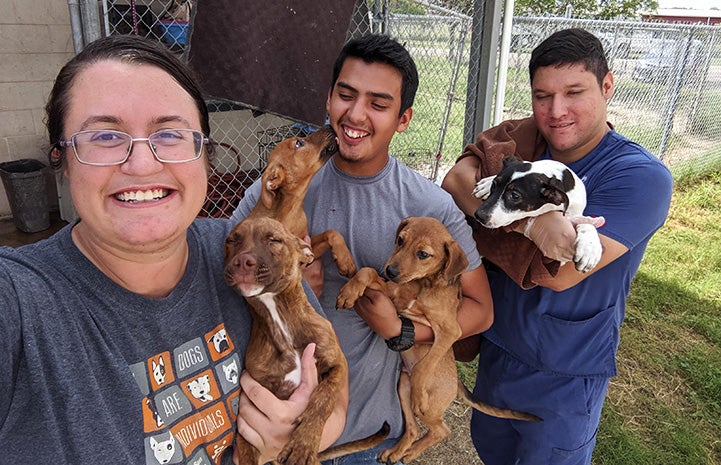
Embracing change to save more lives
Once-unsung heroes like Terri and Jason now have the tools they need to save more lives — and that’s exactly what they’ve done. Over the course of their shelter embed projects, Palm Valley Animal Society, Humane Society of Harlingen and Santa Rosa County Animal Services collectively saved an additional 28,000 dogs and cats.
Inspired by this success, shelter leaders in other communities are asking for assistance. In the last year, we’ve embedded staff in shelters in Abilene, Texas and and Tulsa, Oklahoma, with more on the horizon.
While working in a shelter can take a physical and emotional toll, Terri and Jason feel fulfilled going to work now. “Now I know there is hope,” Terri says. “I can become close to the animals again and give them all the love they want and need. They’re safe here.”
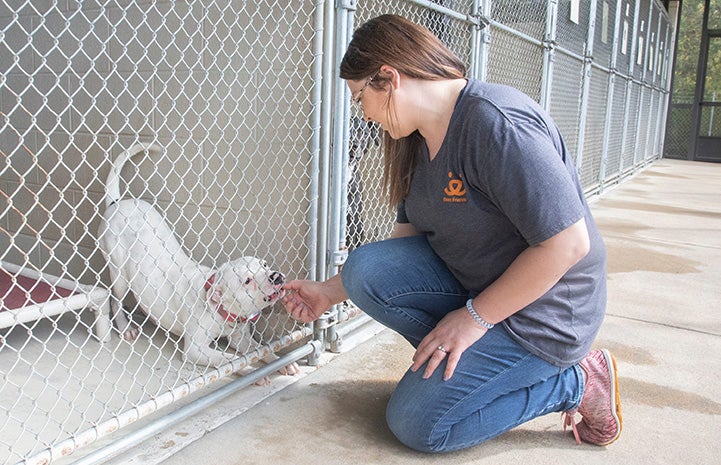
This article originally appeared in Best Friends magazine. You can subscribe to the magazine by becoming a Best Friends member.
Read more:
Florida shelter takes a leap of faith, finds jobs for cats in need
Visiting pooches a big hit at Navy base
The Florida 500: Compassion and teamwork save hundreds of cats
Photos by Terran Tull, Gregg Pachcowski/Pensacola News Journal, Tony Giberson/Pensacola News Journal and Sarah Ause Kichas